2020 Hyundai 130n
► First drive in Hyundai i30 N hot hatch
► 2020 updated spec tested here
► i30 N range starts from under £30k
The first pancake always goes wrong, doesn't it? Unless of course it's cooked by former BMW M Division boss Albert Biermann at the Nurburgring Nordschleife, with the industrial might of Korea's largest car manufacturer behind it.
What on earth are you on about?
This is Hyundai's first ever hot hatch – the i30 N. (We'll temporarily forget about the Veloster, more a warm curio than a bona fide hot hatch).
The i30 N is the first car from Hyundai's Biermann-headed N division and it is responsible for setting the tone for all following N models, plus helping transform Hyundai's overall image from staid runabouts maker to a marque with credible performance cars in its roster. No pressure then.
It started with a comprehensive reworking of the standard car – the i30 N is lower by 4 to 8mm depending on wheel size, stiffer courtesy of a reinforced front sub frame from which sprouts firmer suspension, and more powerful thanks to a new exhaust system and inlet manifold.
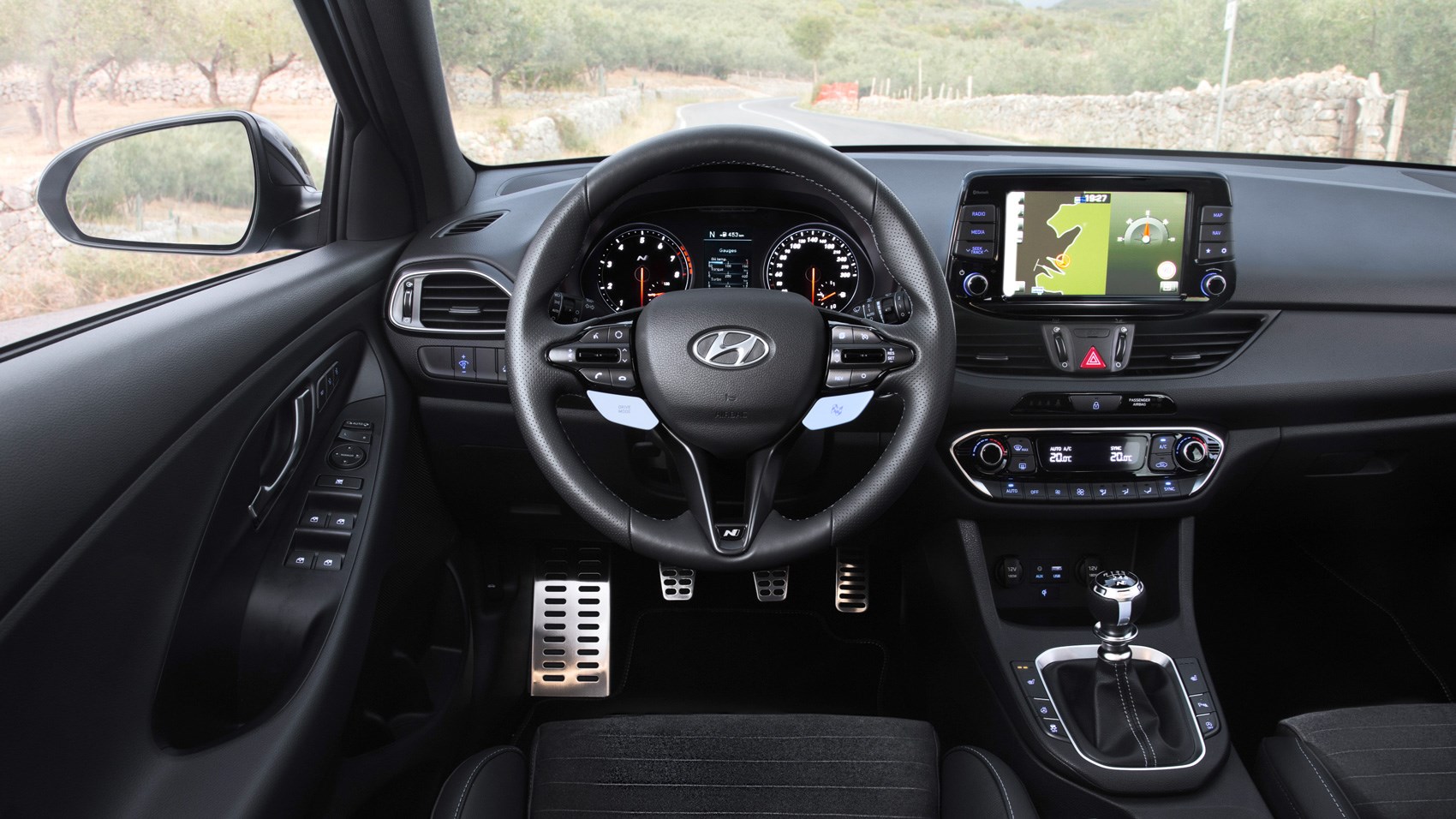
There are also stronger brakes with improved cooling through intakes on the front bumper. The rack-mounted power steering is quicker than the standard car and set up with trackday driving in mind, says Hyundai.
Top speed is electronically limited to 155mph, and the front wheels are driven through a short-throw six-speed manual gearbox, which has been modified with carbon synchro rings for faster shifts.
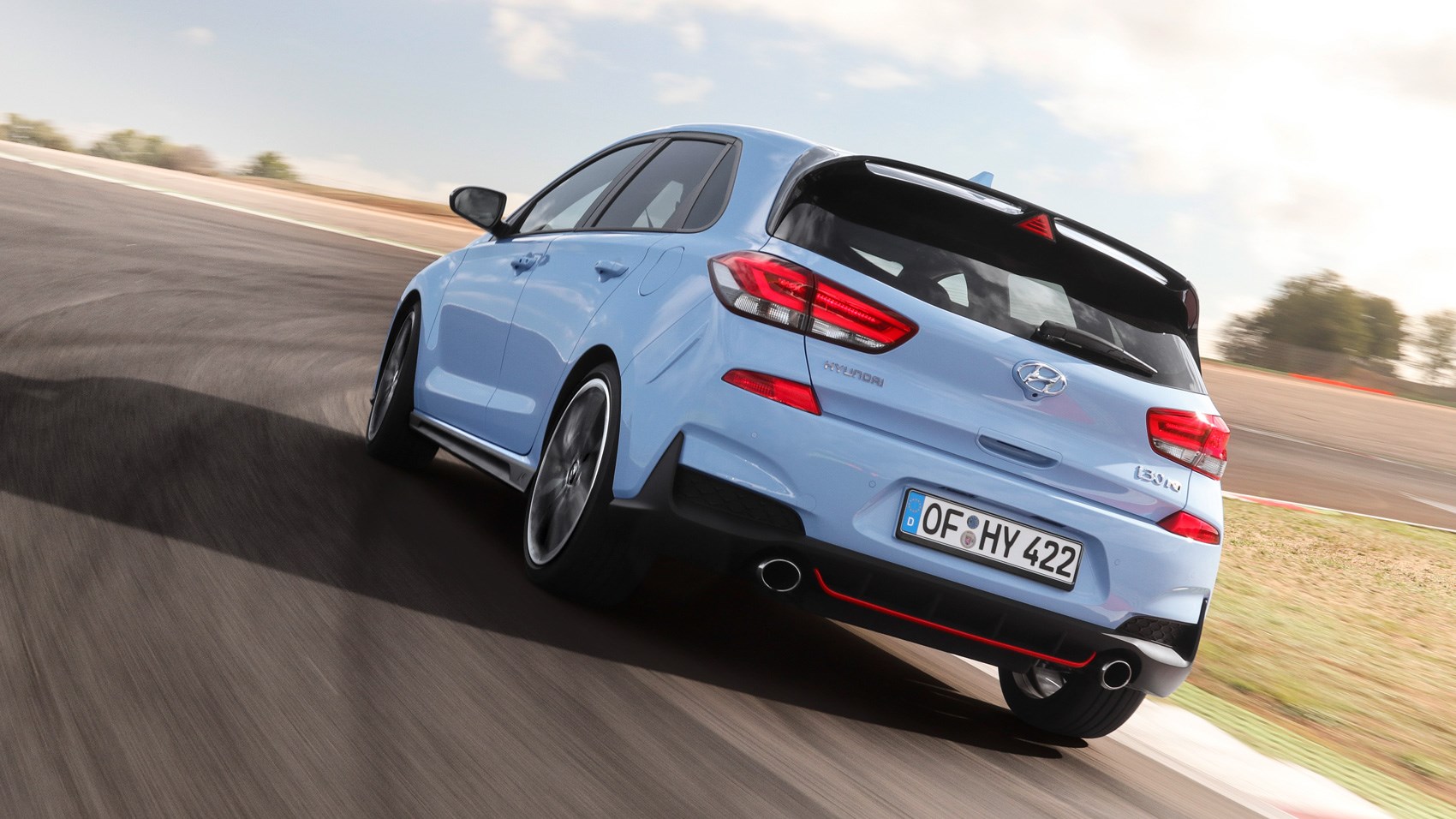
Standard electrickery includes torque vectoring by braking (on the regular i30N - choosing the Performance Pack upgrades to a limited slip differential) and launch control, plus rev-match downshifting. The latter can be easily turned off thanks to a dedicated button on the wheel. This is a good sign.
A saloon-style i30 N Fastback was added to the range in 2019, too.
I am quite excited by all this
Justifiably so – this is no bodykit special.
From launch, the i30 N waded into the market with a £24,995 price tag, undercutting many of its obvious rivals. That figure was for the standard version, however, while the faster Performance Pack variant cost a few thousand pounds more. So many customers opted for the higher-grade car that the standard spec was quietly retired from the line up in May 2020, and the i30 N Performance is now the only version offered in the UK.
The Performance Pack uses the same four-cylinder, 2.0-litre petrol engine but offers up 271bhp, compared with 247bhp for the now off-sale standard i30 N. Fuel economy is virtually identical for both, originally rated at close to 40mpg but since reassessed to 34mpg in line with the WLTP rating system. (And we've found the N quite a thirsty car in daily driving).
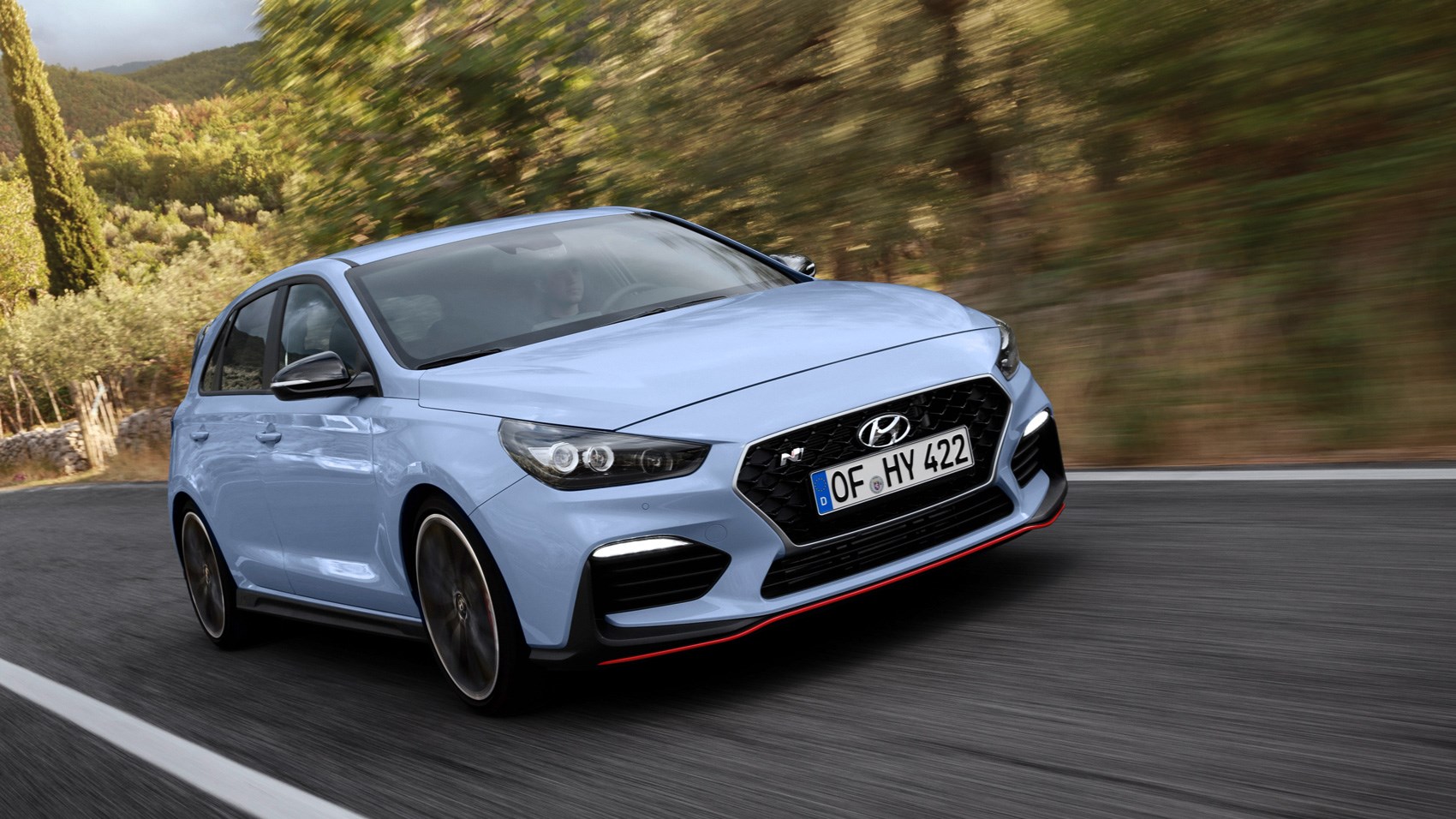
The N Performance cracks 0-62 mph in 6.1 seconds (three tenths faster than the standard i30 N), and features adaptive dampers, with a variety of selectable modes from comfy Eco to track-focused N mode, via Normal, Sport and mix-'n'-match N Custom.
Torque for both models tops out at 260lb ft from only 1500rpm, while an overboost function delivers an extra 18lb ft for 18 seconds, providing the exhaust is up to temperature.
What else do I get for my money?
The i30 N Performance is fitted with 19-inch alloys shod with wide Pirelli P-Zero tyres (complete with a specific Hyundai N compound), larger brake discs for increased stopping power, plus the no-cost option of cloth seats instead of the standard leather and suede, saving nearly 13kg.
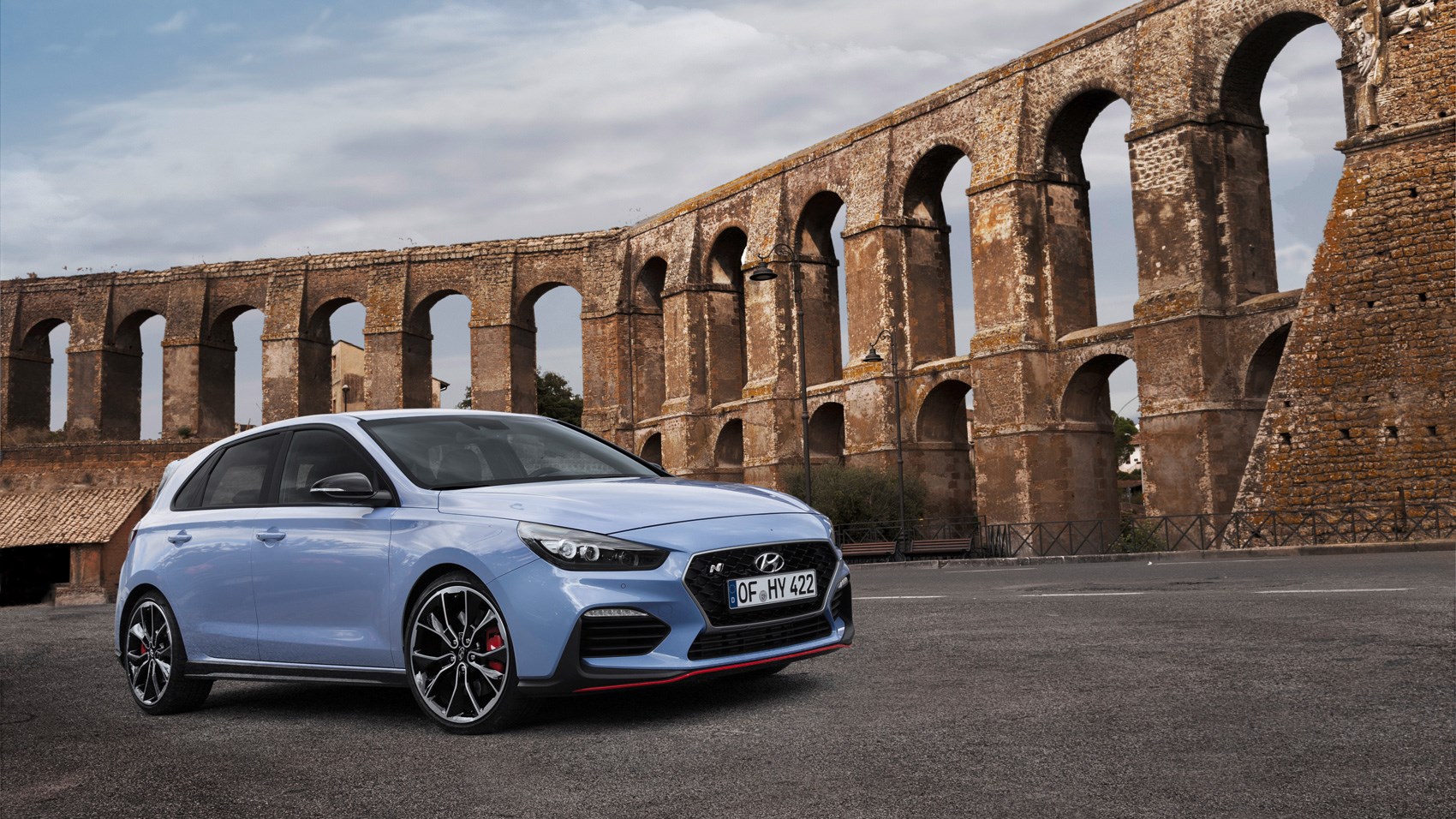
It also gets a joyous variable exhaust system, which is both louder and more characterful thanks to rally-style over-run crackle. It sounds evocative and easily out-burbles more powerful rivals from Honda or the VW Group.
A major plus-point is the hydraulically actuated and electronically controlled limited-slip differential, subtly tightening your line and enabling hilarious cornering speeds in the right circumstances.
What's the Hyundai i30 N like to drive?
Our first testing ground is Rome's Vallelunga – the i30 N suits its long, fast corners and feels heroically grippy, biting hard on turn-in and maintaining reassuring chassis balance mid-bend.
You can tuck the front wheels in neatly by lifting off but otherwise the rear end feels tied-down. The i30 N cleverly treads the line between trust and adjustability - when the grip does run out it's the front that gently and predictably lets go first, usually after an awful lot of tyre squeal.
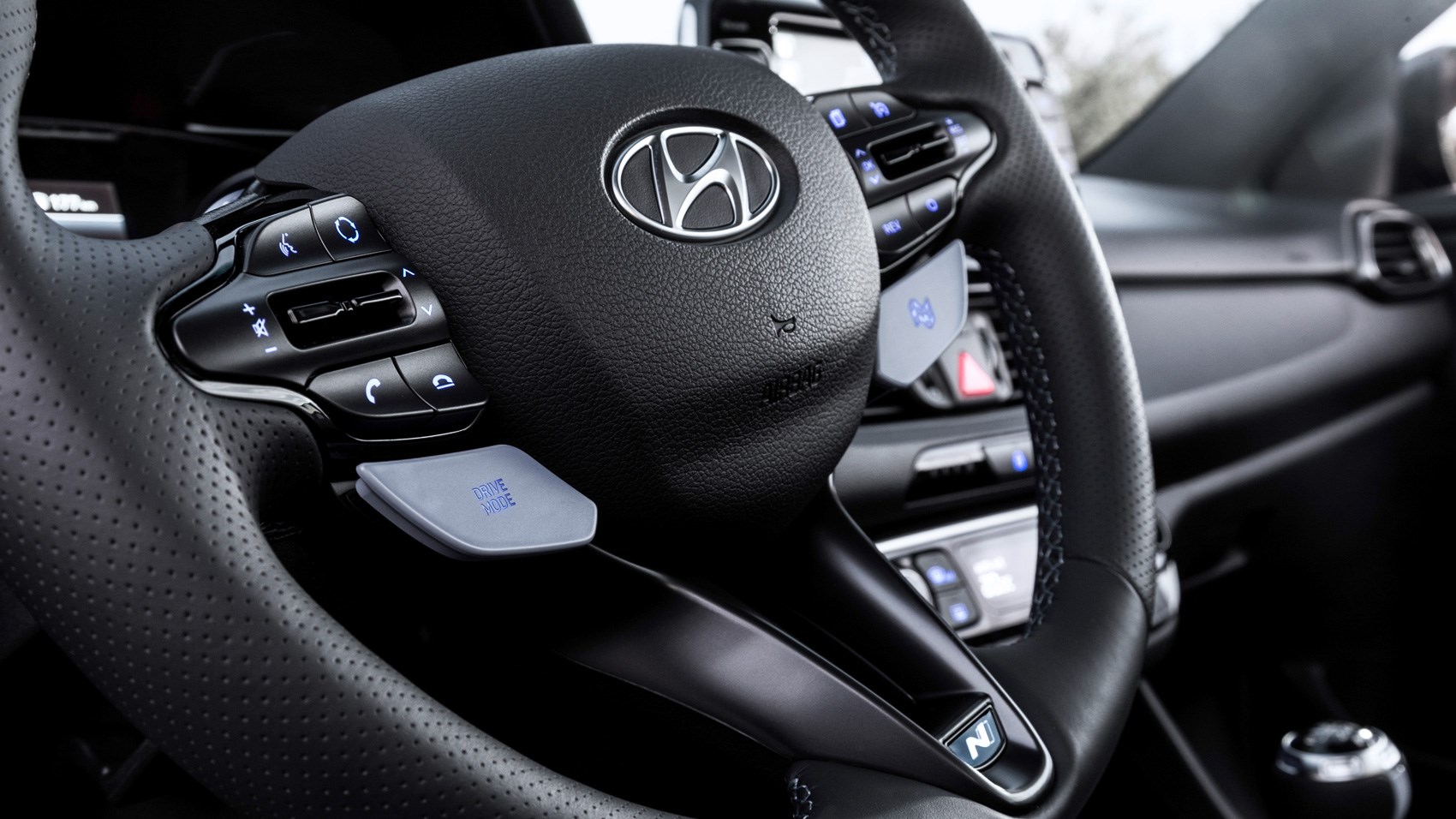
Hyundai says its engineers could have tuned the i30 N for a more playful rear end and faster lap times but deliberately chose a more confidence-inspiring set up. The brakes are equally dependable but not invulnerable to fade on track - under normal running conditions, though, the i30 N pulls up quickly with plenty of feel through the pedal.
Adaptive suspension is standard on the Performance Package car and is super-composed on track. In the real world, on atrocious tarmac far worse than our ownstrada deformata, the comfy dampers impressed. This is a car you'd be happy to use every day.
We've since put in plenty of miles on UK roads in our long-term i30 N test, which you can read here.
I hear the i30 N has been updated for 2020? What does that involve?
A set of minor tweaks, largely centred around the suspension. In essence, the slightly more pliant set-up first fitted to the i30 N Fastback has been mapped over to the hatch too. The changes were applied in late 2019, and offered for sale in the UK from early 2020.
The suspension changes include new, larger front bumpstops, reduced front spring rates, a thinner front anti roll bar and re-tuned front and rear dampers. The ESP software has been updated too.
In all honesty, you'd need a back-to-back test to feel the difference, and when we tested the new set-up more than a year had passed since we were last behind the N's chunky steering wheel. But the new set-up does feel a mite more supple in terms of ride quality, and the steering slightly lighter than the He-Man-heavy set-up previously.
Ride is still at the uncompromising end of the scale, however; this is a hatch at the hardcore end of the scale. It looks less wild than the Civic Type R, but in some ways is actually the hairier hatch. It's very much a larger-than-life kind of hot hatch, and the tweaks haven't changed that – which is a good thing.
A new, more heavily updated i30 N is due in 2021.
Should I buy one?
Yes – for a start it's great value with a substantial standard spec: LED head lights, adaptive cruise control, and 8-inch touchscreen sat-nav. Safety features like autonomous braking, lane keep assist and road sign recognition are carried over from the regular i30, plus you also get a five-year warranty.
More to the point, it's good clean fun to drive. This car may not advance the hot hatch game in terms of outright performance, but for Hyundai, often cited as a maker of beige appliance cars for people not interested in driving, it's an intergalactic leap. This is the brand's first proper hot hatch – and it has emphatically hit the ground running.
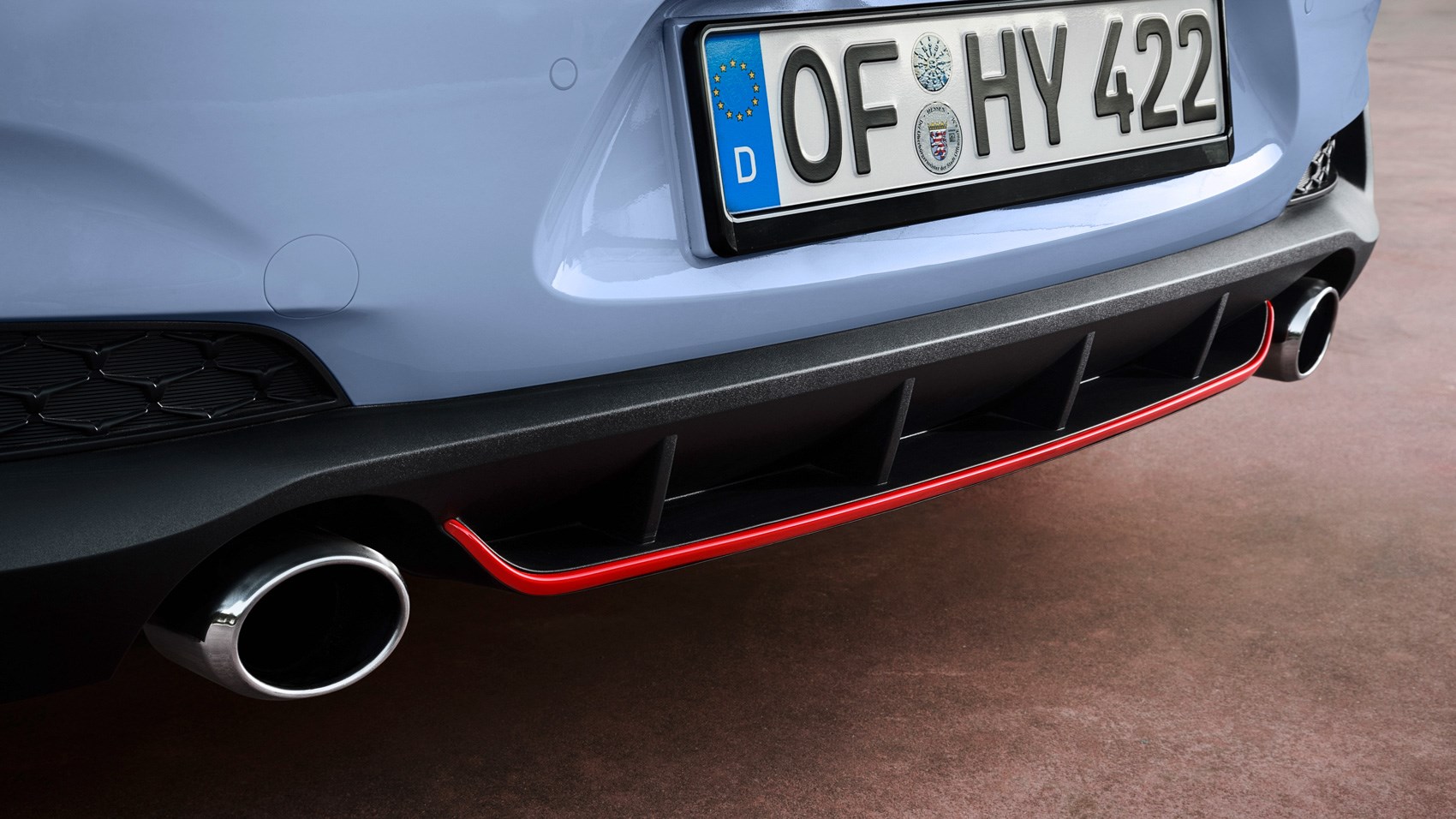
The i30 N is admirable in bringing a sense of humour to a market increasingly obsessed with soulless lap times, often at the expense of emotional enjoyment. Hyundai says this car has been designed to make your heart beat faster – essentially the opposite of a regular i30, then…
By Adam Binnie and James Taylor
Source: https://www.carmagazine.co.uk/car-reviews/hyundai/hyundai-i30-n-2017-review/
